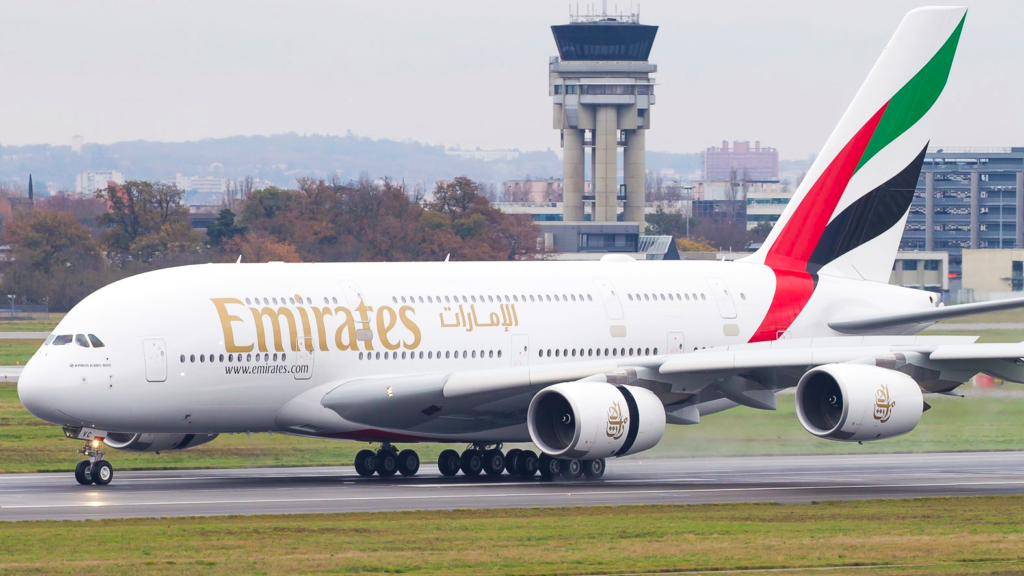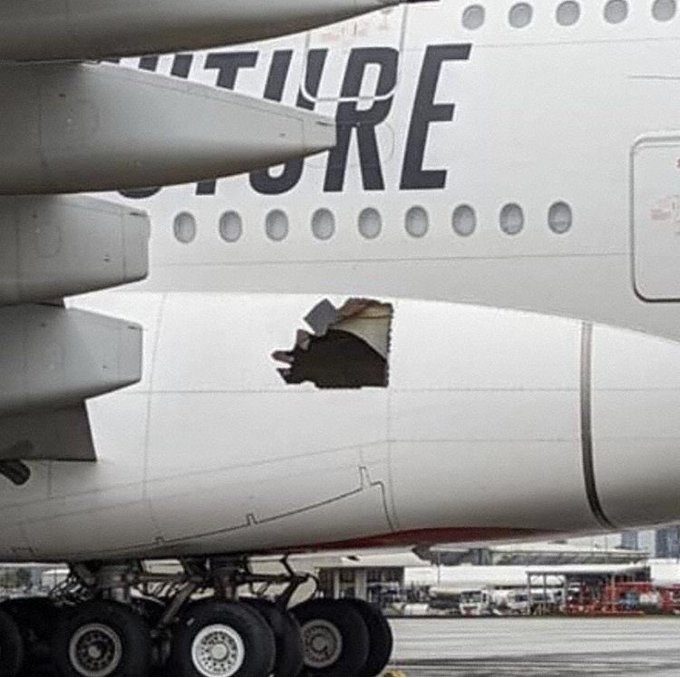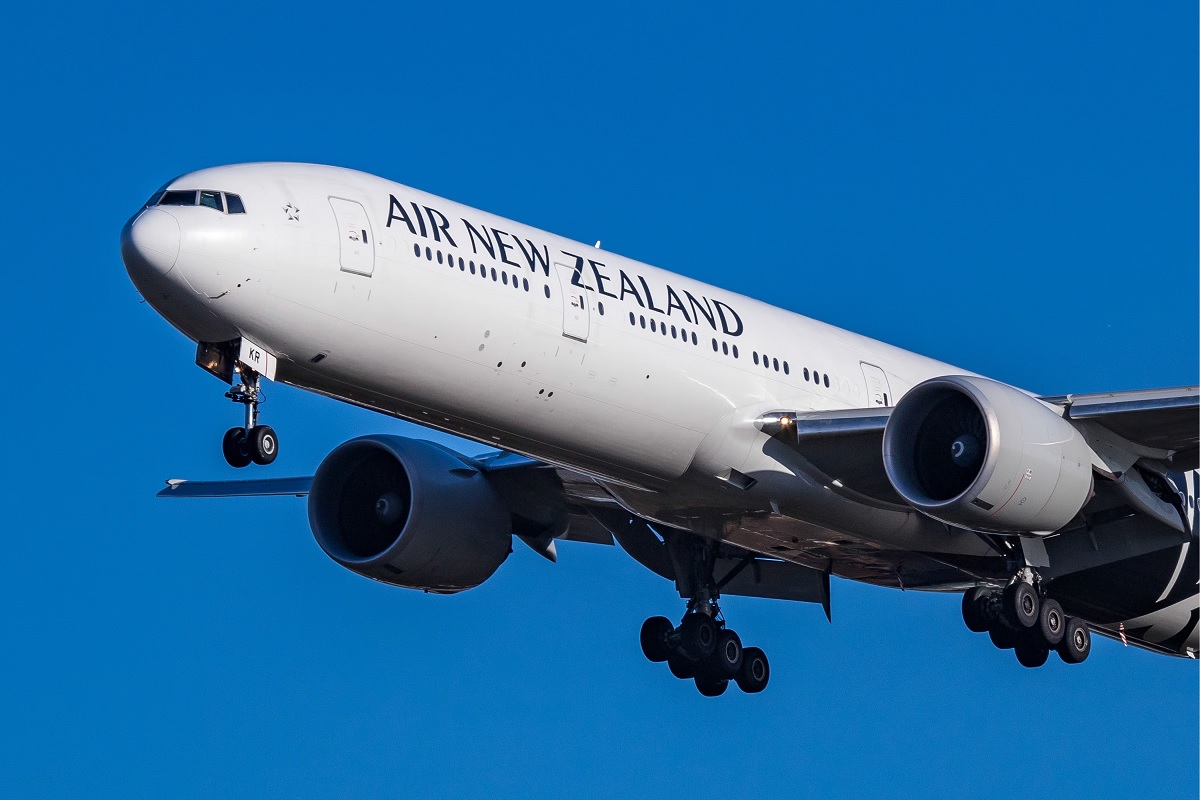When Planes Take a Detour
In an unusual turn of events, Air New Zealand will be flying one of its Boeing 777 aircraft back to Auckland, not with passengers, but for repairs. Why? Because this aircraft suffered a 7 cm puncture in its fuselage during a routine pushback at Brisbane Airport. With safety top of mind, the airline has coordinated with Boeing engineers to ensure the damaged plane makes its journey home safely — albeit at a much lower altitude than usual.
The Incident at Brisbane Airport
What Went Wrong?
On Thursday, the Air New Zealand Boeing 777 collided with an airbridge at Brisbane Airport during a routine ground maneuver. The impact caused a 7-centimeter hole in the fuselage, just below the cockpit window.
Immediate Action
The flight, NZ146, bound for Auckland, was instantly canceled. Engineers carried out a full inspection on-site, determining the aircraft was not fit for commercial flight.
The Engineering Verdict
Consultation with Boeing
Air New Zealand consulted Boeing engineers for expert guidance. It was decided that the aircraft could be safely ferried to Auckland for repairs under strict safety protocols.
Ferry Flight Conditions
- Altitude: 10,000 feet (about one-third of normal cruising altitude)
- Cabin: Unpressurised
- Load: No passengers or cargo onboard
This low-altitude ferry flight is an accepted industry method for relocating damaged aircraft when conditions are safe.
MUST READ: Chinese-Made J-10 Fighter Downs Indian Jets in Major Combat Debut
Safety Above All
No Compromise on Safety
Nathan McGraw, Chief Safety and Risk Officer at Air New Zealand, stated that every step has followed standard aviation safety procedures. The coordination with Boeing ensured that the aircraft will return to Auckland without further risk.
Unusual but Not Unheard Of
While flying an aircraft in an unpressurised state is rare, it is a recognized and approved strategy when damage doesn’t compromise flight integrity but still prevents regular operations.
Passenger Impact
Reaccommodation Process
All passengers booked on NZ146 were rebooked within 24 hours. Air New Zealand managed the situation smoothly, showing responsiveness and customer care.
Zero Injuries Reported
Thankfully, no one was hurt during the incident. All safety measures were activated instantly to mitigate any further risk.
The Bigger Picture
Scheduled Maintenance in Singapore
Interestingly, this Boeing 777 was already set to head to Singapore for routine maintenance later in the week. After necessary fuselage repairs in Auckland, it will proceed to Singapore as planned.
Minimal Operational Disruption
Because of the existing schedule, this incident hasn’t thrown Air New Zealand’s broader operations off track.
Aviation Community Reacts
Industry Best Practices
The aviation community has largely praised Air New Zealand’s decision. Ferrying the aircraft under controlled conditions shows a commitment to safety and smart logistics.
Why 10,000 Feet?
At this altitude, the unpressurised cabin won’t be an issue since it remains within human survivable limits for the ferry crew, and it minimizes further strain on the damaged fuselage.
Throwback: Emirates A380 Incident in 2022
Fuselage Hole Mid-Flight
On July 1, 2022, Emirates Flight EK430 landed in Brisbane after a 13-hour flight from Dubai with a noticeable hole in its fuselage. The damage was discovered post-flight.

Emirates Airbus A380 | Photo: Clément Alloing

An Emirates A380-800 safely landed at Brisbane, Australia with a huge hole in its fuselage
Unnoticed in the Air
Although some passengers heard a loud bang shortly after takeoff, no one suspected a structural issue during the flight. The aircraft landed safely, but subsequent inspection revealed significant damage.
The Possible Cause
Investigators pointed to a potential blown tire or foreign object damage. There was also a missing bolt and cap on the nose landing gear — possibly related.
How Do Airlines Handle These Situations?
Standard Operating Procedures (SOPs)
All major carriers follow strict SOPs for structural damage:
- Immediate grounding
- Expert assessment
- Manufacturer consultation
- Controlled repositioning if deemed safe
Communication and Transparency
Airlines must also maintain transparency with passengers, regulatory bodies, and the public, which Air New Zealand has done commendably.
Passenger Safety: Always a Priority
Emergency Preparedness
From alerting ground services to rerouting and booking alternatives, passengers remain top priority in any such incident.
Zero Compromise Policy
No matter the cost or inconvenience, airlines prioritize human lives above all else. This philosophy was evident in the swift response by Air New Zealand.
What Happens During a Ferry Flight?
Crew-Only Operation
A ferry flight carries no passengers, only essential crew.
Monitoring and Communication
The aircraft remains in constant contact with air traffic control and operational bases throughout the journey.
The Role of Aviation Engineers
Precision Assessment
Aircraft engineers are trained to assess even the smallest anomalies and determine airworthiness.
Collaborating with Manufacturers
In this case, Boeing’s involvement was crucial in giving the green light for the ferry flight.
Damage Control: The Technical Side
Fuselage Repair
In Auckland, certified engineers will perform detailed structural repairs before the plane continues to Singapore for further checks.
Inspection Tools
Advanced tools like ultrasonic testing and borescopes help identify any internal or hidden damage.
Why Public Trust Matters
Building Confidence
Incidents like these test an airline’s credibility. By handling it professionally, Air New Zealand strengthens public confidence.
Learning Opportunity
Each incident provides lessons that improve future safety protocols and technical handling.
Conclusion: Clear Skies Ahead
While a 7-centimeter hole might not seem like much, when it comes to aviation, every millimeter counts. Air New Zealand’s quick response, combined with its collaboration with Boeing, ensured a plan that prioritized safety above all. The upcoming ferry flight to Auckland is a textbook example of industry best practices. With repairs underway soon and passengers already rebooked, this story reminds us how resilient and responsive modern aviation truly is.
FAQs
1. What caused the hole in the Boeing 777?
The aircraft collided with an airbridge during pushback, creating a 7cm hole beneath the cockpit window.
2. Is it safe to fly an aircraft with a fuselage hole?
Yes, under specific conditions. Ferry flights without passengers at low altitudes are industry-approved when coordinated with aircraft manufacturers.
3. Why isn’t the aircraft being repaired in Brisbane?
The airline chose to return the aircraft to its Auckland base for detailed repair and then on to Singapore for scheduled maintenance.
4. Were any passengers injured?
No, there were no injuries reported.
5. How often do such ferry flights happen?
They are rare but not unheard of. They’re used when the aircraft is airworthy under controlled conditions but unfit for commercial service.




